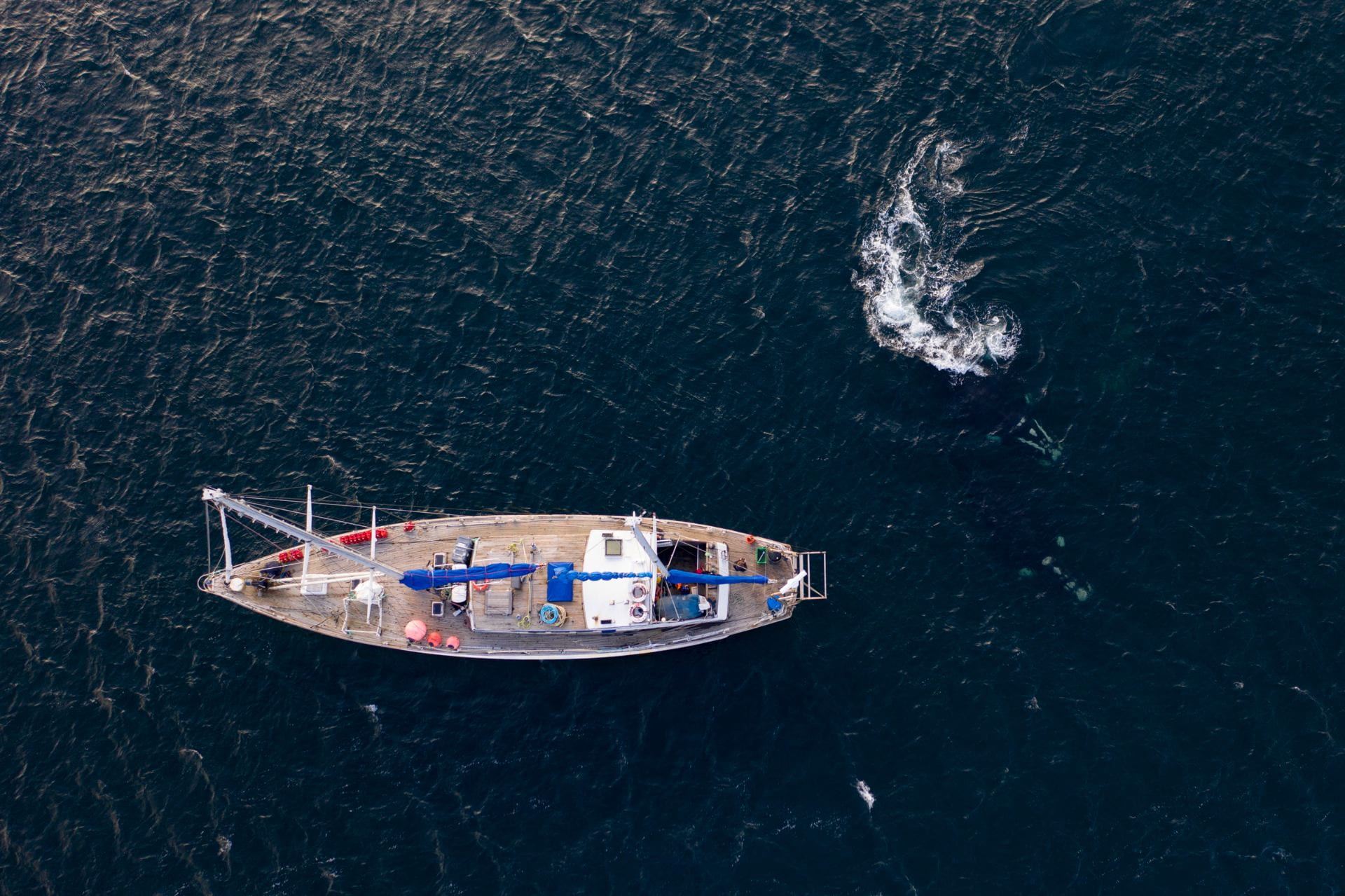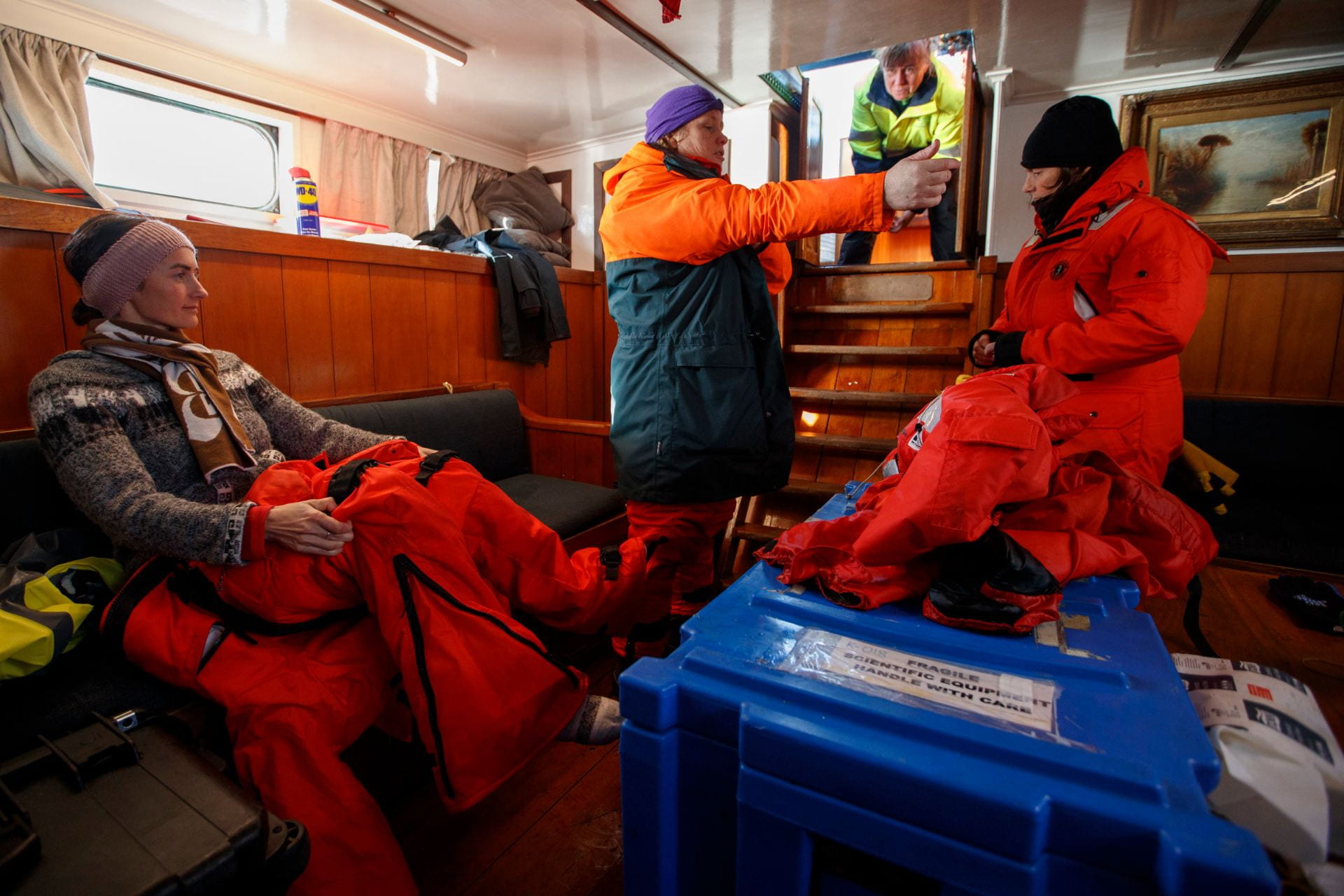Working in the subantarctic in winter has its challenges, but we are lucky to live aboard the ESV Evohe while down in the Auckland Islands. This vessel is our home, office and makeshift lab while in the field. This office doesn’t have broadband, however, so twice a day we use satellites to download emails and get the latest weather forecast.
Evohe and whale, credit to Richie Robinson

The weather is the biggest factor in what we do. I make a rough plan – well, several plans to be honest – in the evening for what we’ll do the following day, based on the weather forecast and potential variations thereof. So far we’ve had better weather than forecast with some beautiful days. It could easily go the other way.
If the weather is good enough, our office for the day is a zippy little boat. This allows us to easily move around Port Ross and work with the whales, but unlike the other animals living down here, we don’t have fur, feathers or blubber to keep the cold out. So we need to ensure we have the right gear to stay warm and dry. Antarctica NZ have kindly lent us some snazzy bright orange mustang suits: these are basically well insulated onesies that we can put over top of thermals and fleeces and underneath a rain jacket. Personally, I have been wearing 4 layers of trousers and 5 layers of tops, as well as typically two pairs of gloves and a beanie. This clothing blubber layer is doing a good job at keeping me warm.
Getting our blubber on, credit Richie Robinson

For the past few days it’s been a bit squally, and you can see the weather coming down the harbour. In between shower and hail, we have been able to do some drone work, measuring how fat the whales are, and linking it to small skin samples that we collect using a remote biopsy system. This use of drones is one of the next steps in our work compared with 10 years ago, but it’s really linking with these small skin samples that I’m excited about. The small skin sample will tell us who they are, who they are related to using genetics; where they are feeding using microchemical markers called isotopes; and even how old they are using small changes in the DNA accents over time. I’m hoping we can see how fatness and how many babies a whale has correlates with age, feeding grounds and genetic lineages.
As well as helping fund this research, marine conservation organisation Live Ocean has launched a whale sighting campaign around mainland NZ to help add to our knowledge about where these whales go. For more information on the research or how to report a sighting go to www.liveocean.com